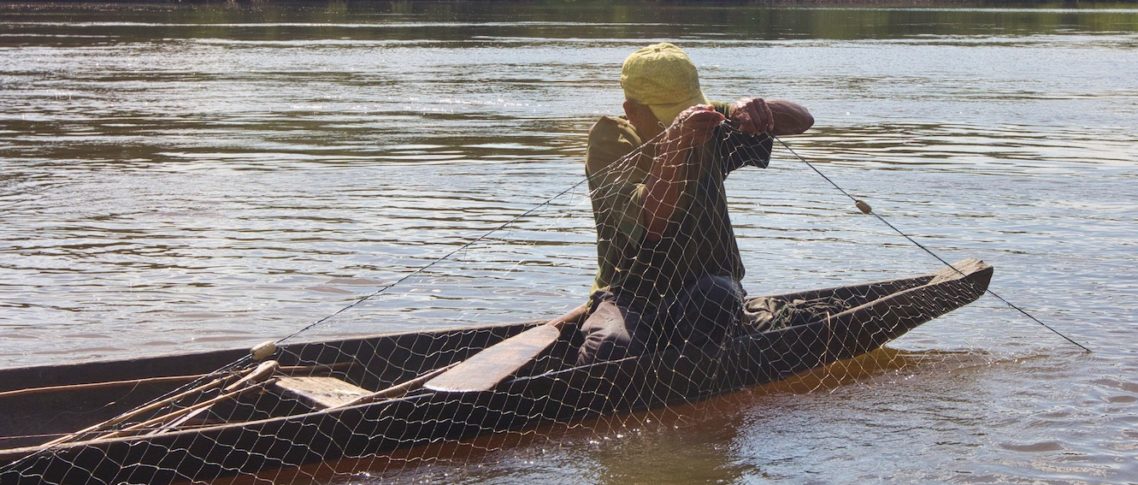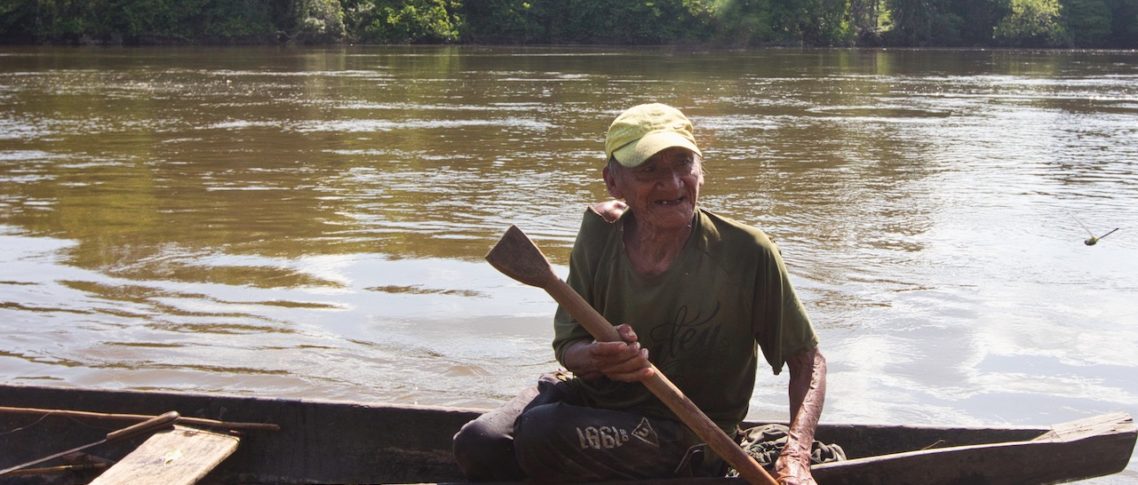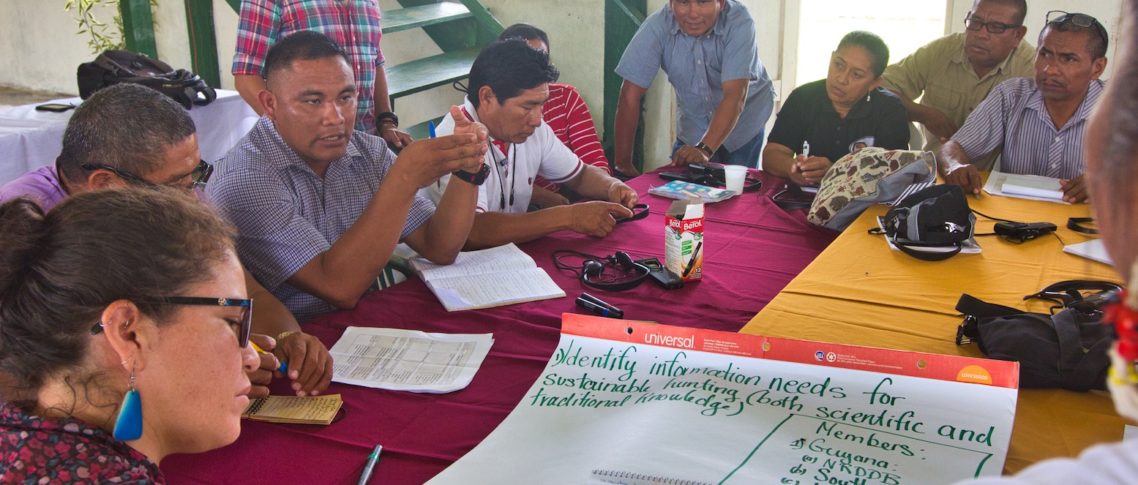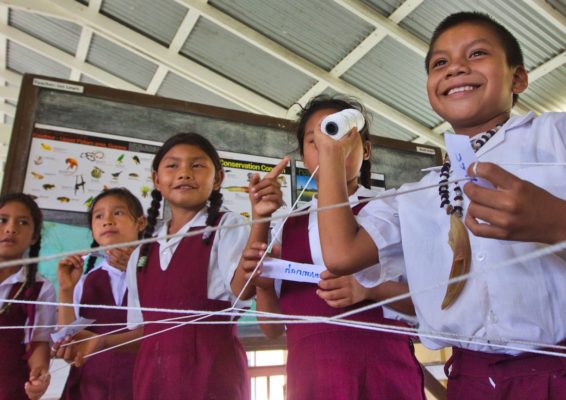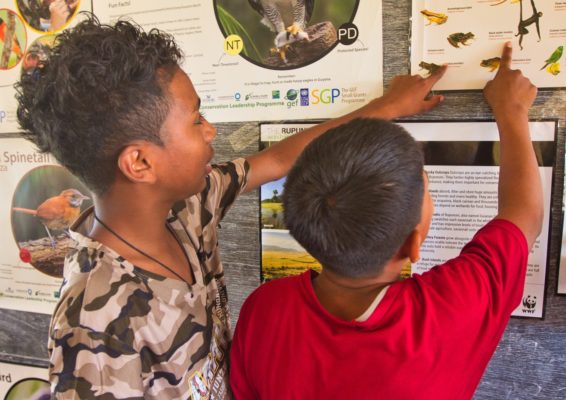Now that work is under way with support from the Guyana branch of the Sustainable Wildlife Management (SWM) Programme, which is working to improve the conservation and sustainable use of wildlife in forest, savannah and wetland environments in 13 countries.
“This gives community members a chance to save their fish resources,” Edwards says.
Fishing for data
As part of the process of adapting the fisheries plan, communities will collect information about fishing and fish consumption from among the approximately 7,000 people who live in the North Rupununi sub-district.
“To better manage fish resources, we need to understand what is happening,” Edwards says.
Using a mobile phone app, he works with 20 to 25 fishers in each community to gather information about how, when and where they fish, and the species they catch, as well as how much and what kinds of fish villagers buy and eat.
Some questionnaires are aimed at villagers in general, while others target grocery stores or focus on sport fishing, which is a tourist pastime. Other surveys gather information about changes in the climate and aquatic habitats, as well as the timing of fish spawning runs.
That information will be combined with estimates of fish stocks to develop a management plan that will specify dates for fishing seasons and catch limits for different categories of fishing. The plan will also regulate net size, to avoid catching immature fish.
Each fisher will have a permit that specifies allowable fishing techniques, as well as different quotas for those who fish for subsistence, or just to feed their families, and those who sell fish locally or commercially, Edwards says.
That may be more difficult to regulate, because some people fish for subsistence, but sell surplus to earn cash to buy necessities.
“There will always be (discussion) about what is subsistence and what is not, and what is commercial and what is not,” says Ivor Marslow, executive director of the NRDDB. Nevertheless, he adds, “I definitely think you have to put numbers to things,”
Once the management plan is in place, Edwards and other fisheries managers will visit the villages to ensure that residents understand the regulations and help them comply.
“This isn’t to scare fishermen, but to work with fishermen and try to put a sustainable (system) in place,” he says.
Initially, village councils will enforce the guidelines, under powers granted to them by Guyana’s Amerindian Act, but Edwards hopes the regulations will eventually serve as the basis for national freshwater fisheries legislation, which Guyana currently lacks.
Participants in the workshop on sustainable hunting, held in Aishalton, Guyana, on 8-10 September 2019, meet in small groups to discuss common concerns.
CIFOR/Barbara Fraser
Teaching through song
Most villages that are part of the NRDDB are located along riverbanks. Several are near the confluence of the Rupununi and Essequibo Rivers, traditionally a rich fishing ground.
But when Gloria Duarte was fishing in that area two years ago, she was surprised at how much the fishing had changed.
“People say they don’t catch fish like before,” says Duarte, 49, a former toshao of the village of Rupertee who fishes with her husband.
In the village of Apoteri, where the rivers meet, “people say you can’t just throw the hook and catch a fish, like before,” she says.
She blames a combination of factors. The use of nets instead of lines has contributed, and commercial fishers come from the coast or from Lethem, the nearest city, to fish there, she says. Added to that is the noise from boat motors, which disturbs the tranquility of the rivers.
Saddened by the changes, Duarte composed a song about them in her native Makushi language. It is part of her effort to ensure that young people learn the traditions of their parents and grandparents.
“Mothers try to keep the culture alive by using traditional food,” she says.
But she worries that people are eating less fish and more imported chicken. They are also consuming more processed food, which contributes to an increase in health problems such as diabetes and hypertension.
Students play a game in which they weave a web of life during the launch of an environmental education curriculum at the elementary school in the village of Shulinab, in Guyana’s Rupununi region.
CIFOR/Barbara Fraser
Students at Sand Creek Secondary School identify local wildlife on posters during the launch of the new environmental education curriculum.
CIFOR/Barbara Fraser
As she sings about how fishing was in earlier times, and how it is today, children dance with movements that mimic the motions of fishing, in costumes that evoke the arapaima, a giant, air-breathing fish that has become scarce in the region.
“I love to go fishing,” Duarte says. “I love to eat fish fresh from the river, when you roast it and eat it fresh, with cassava bread, right on the river bank.”
She worries that traditional knowledge is being lost, and hopes that by performing songs and dances, children and teenagers will learn about their heritage and teach others.
“If you don’t educate young people about the birds and the animals,” she says, “how will they know?”
The Sustainable Wildlife Programme is funded by the European Union and implemented by the Center for International Forestry Research (CIFOR), the United Nations Food and Agriculture Organization (FAO), the French Agricultural Research Centre for International Development (CIRAD) and the Wildlife Conservation Society (WCS).
Copyright policy:We want you to share Forests News content, which is licensed under Creative Commons
Attribution-NonCommercial-ShareAlike 4.0 International (CC BY-NC-SA 4.0). This means you are free to redistribute our material for non-commercial purposes. All we ask is that you give Forests News appropriate credit and link to the original Forests News content, indicate if changes were made, and distribute your contributions under the same Creative Commons license. You must notify Forests News if you repost, reprint or reuse our materials by contacting
forestsnews@cifor-icraf.org.
